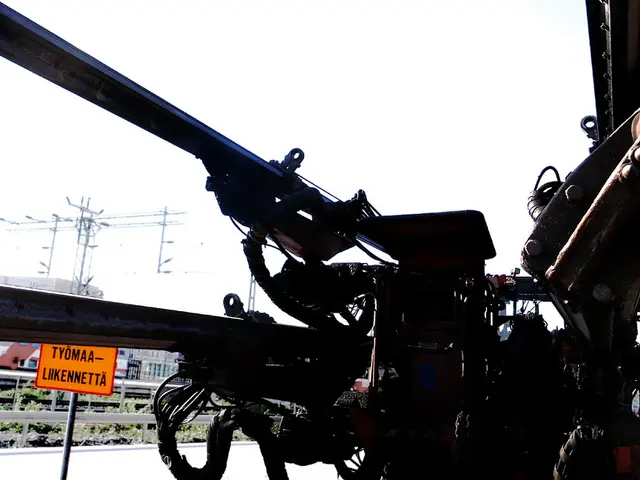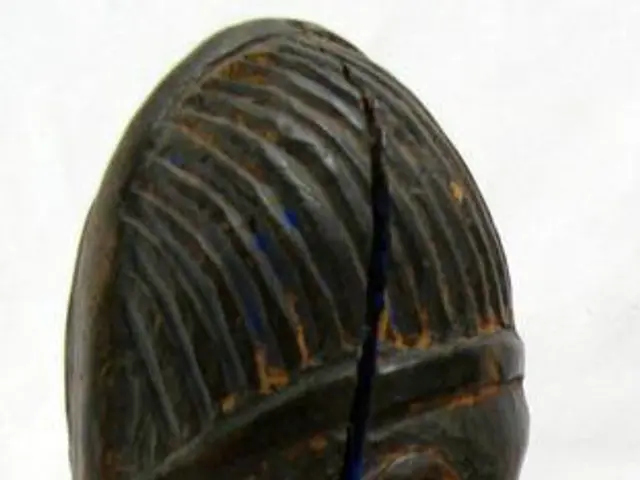Struggling Soil for Bees: Nurturing Plants to Encourage Growth
Transforming the Base Article
** Title: A Bee-Friendly Garden: Plants that Thrive in Poor Soil**
Opening
Bringing bees to your backyard can be easier than you think, even if you're dealing with less-than-perfect soil. By creating a bee-friendly garden, you're not only ensuring a flourishing PolliNation party, but also contributing to the conservation of these vital pollinators. Here are some plants that do wonders in poor soil, making them the perfect addition to your flowery oasis.
| Characteristics | Values || --- | --- || Scientific Name | Various (Listed below) || Plant Type | Perennials, Annuals, Herbs, Trees, Shrubs || Geographic Origin | North America, Eurasia, Asia, Europe, Mediterranean, Africa, Australia, Central Asia, North Africa || Sun Exposure | Full Sun to Partial Shade, Full Sun |
- Perennials: Bee Balm, Asters, Goldenrod, Purple Coneflower, and Black-Eyed Susans
Perennials are a fantastic option if you want to provide a continuous food and shelter source for our buzzy friends. Check out some great perennials that can grow in poor soil:
- Bee Balm
Bee balm, or Monarda, is a shrub native to North America that can grow up to 4 feet tall. Its clusters of tubular flowers (white, red, purple, and yellow) are heaven for bees and other pollinators. Bee balm can handle tough soil conditions and prefers moist soil in open fields, meadows, and near water sources like streams and ponds.
- Asters
Asters are versatile perennials that can grow in various conditions, from full sun to partial shade. They typically produce bright, colorful flowers, and are easy to care for. Asters are excellent for pollinators as they offer a lot of nectar. They come in many varieties, with colors ranging from bold fuchsia to soft purple.
- Goldenrod
Goldenrod is a low-maintenance perennial that can grow quickly and bloom profusely. It typically grows to a height of 1-5 feet and has bright yellow flowers with a sweet fragrance. Goldenrod is well-known for attracting bees and other pollinators. It prefers full sun and moist, well-drained soil. Goldenrod is drought-tolerant and can thrive in poor soil.
- Purple Coneflower
Scientific Name
The purple coneflower, or Echinacea, is a beautiful perennial that can grow to a height of 2-5 feet. It features prominent central cones that bees frequently visit to collect nectar and pollen. Purple coneflower has a long bloom period, providing bees with a continuous food source.
- Black-Eyed Susans
Black-Eyed Susans are cheerful, bright yellow perennials that are easy to grow and care for. They thrive in full sun and well-drained soil. Once established, they require minimal maintenance and will continue to grow and bloom year after year.
Aster, Monarda, Rudbeckia hirta, Liatris pycnostachya, Lamprocapnos spectabilis, Calendula officinalis, Foeniculum vulgare, Pennisetum, Gaillardia x Grandiflora, Solidago, Vernonia noveboracensis, Lavandula, Helleborus x hybridus, Helianthus × laetiflorus, Vinca minor, Echinacea purpurea, Salvia rosmarinus, Perovskia atriplicifolia, Eryngium planum, Tanacetum vulgare, Achillea millefolium
- Annuals: Single-flowered Marigolds, Borage, Tickseed, and Blanket Flowers
Annuals make for a great way to attract bees to your garden quickly. Single-flowered marigolds, borage, tickseed, and blanket flowers are all easy-to-grow, bee-friendly options:
- Single-flowered Marigolds
Single-flowered marigolds are a beautiful and vibrant addition to any garden. Marigolds are easy to grow and care for, making them a great choice for beginners. They typically bloom from midsummer to early fall and can grow to a height of 1-3 feet. Bees are drawn to their bright, golden petals and the nectar and pollen they offer.
- Borage
Plant Type
Borage, also known as starflower, is an herb with beautiful blue, star-shaped flowers. It is a prolific nectar producer and blooms from late spring until fall. Its bright blue flowers are highly attractive to bees and other pollinators.
- Tickseed
Tickseed, or Coreopsis, is a cheerful and long-blooming flower that is loved by bees. It typically blooms from midsummer to fall and can grow to a height of 1-3 feet. Tickseed is a member of the sunflower family and produces daisy-like flowers in a variety of colors, including yellow, orange, red, and brown.
Perennial, Biennial, Evergreen Perennial, Ornamental Grass
- Blanket Flowers
Blanket flowers, or Gaillardia, are native to North America and Mexico. They are extremely low-maintenance and can tolerate a wide range of conditions. Blanket flowers typically bloom from early summer to fall and can grow to a height of 2-3 feet. Bees are drawn to their daisy-like flowers, which come in a variety of colors,including red, orange, yellow, and pink.
- Herbs: Rosemary, Thyme, and Basil
Herbs are an excellent way to support bees, as they can provide a reliable food source even in poor soil conditions. Here are some herbs that bees love:
- Rosemary
Geographic Origin
Rosemary is a drought-tolerant herb that can grow to be quite large. It thrives in dry, hot climates and well-drained soil, so it's a good choice for poor soil conditions. Rosemary offers nectar for bees with its blue flowers.
- Thyme
Thyme is another herb that loves sun and dry conditions. It produces extremely small flowers that are densely packed on the plant, giving bees plenty of nectar to forage. Thyme also has the added benefit of producing oil that can help control varroa mites, which are harmful to honey bee hives.
North America, Eurasia, Asia, Europe, Mediterranean, Africa, Australia, Central Asia, North Africa
- Basil
Any variety of basil that blooms can be a good source of pollen and nectar for bees. Basil thrives in morning sun and well-drained soil but should be protected from the harshest afternoon sun. It's important to pinch off the flowers to prevent the plant from going to seed and to prune it for bushier growth.
- Trees: Maples, Apples, Cherries, and Plums
Trees make for great additions to a bee-friendly garden, as they provide shelter and food for bees. Here are some tree options for poor soil:
- Maples
Plant Size
Maples are ideal for supporting bees in late autumn when other food sources may be scarce. They prefer consistently moist soil, but the Autumn Blaze Maple is a drought-tolerant hybrid that can handle poor soil conditions.
- Apples
Apples make for a hardy choice for fruit trees, making them a good option for supporting bees through cross-pollination. They require at least two varieties for successful pollination and fruit production.
1-8 feet, up to 4 feet, 2-3 feet, up to 5 feet, up to 3 feet, 1-2 feet, 4-6 feet, up to 4 feet, 2-3 feet, 1-5 feet, 3-6 feet, 2-3 feet, 3-6 feet, 1-1.5 feet, 3-6 feet, 3-6 inches, 2-5 feet, 2.5-5 feet, 2-3 feet, 2-4 feet, 1-3 feet
- Cherries and Plums
Cherries and plums, part of the Prunus family, are also great for bees. While they do well in a range of soils, they often require cross-pollination for successful fruiting.
- Shrubs: Spirea, Rose, Summersweet, and Rosebay Rhododendron
Shrubs can provide food and shelter for bees, even in poor soil. Here are some shrubs that bees love:
- Spirea
Sun Exposure
Spirea is a pink-flowering shrub that is widely available and easy to grow. Its bright flowers are a big draw for bees during the middle of the summer.
- Rose
Wild roses and rose 'Rosa rugosa' are popular with bees, as they have open flowers and fewer petals, which makes it easier for bees to gather nectar and pollen. When choosing roses for bees, go for older, traditional types, like 'Dog Rose.'
Full Sun to Partial Shade, Full Sun, Full Sun
- Summersweet
Summersweet, or Clethra alnifolia, is native to the eastern United States and is a big draw for pollinators, including bees and butterflies. It can adapt to a range of soil conditions and prefers moist, shady areas.
- Rosebay Rhododendron
Rosebay Rhododendron, or Rhododendron catawbiense, is a woody, evergreen or deciduous shrub native to the United States and Asia. It typically grows 6 to 10 feet tall and prefers moist, well-drained, acidic soils in dappled shade. It's important to avoid dense clay soil, as it's not suitable for this shrub. Rhododendron blooms in clusters and typically has white, pink, purple, red, or yellow flowers that attract hummingbirds and the specialized bee Andrena cornelli.
Conclusion
By planting a variety of bee-friendly plants in your garden, you can create a paradise for these essential pollinators. Not only will your little bundle of buzzing joy liven up your garden, but you'll also be helping to conserve these valuable creatures.
- Sources:[1] "Lavender's Ease in Poor Soil" - https://www.armstronggardencenters.com/learn/landscaping-living/lavenders-ease-in-poor-soil[2] "Goldenrod: A Surprise for Bees and Hummingbirds" - https://www.monarchwatch.org/goldenrod/goldenrod.html[3] "Native Salvias for Bees, Butterflies and Hummingbirds" - https://www.davesgarden.com/guides/articles/view/93227/[4] "Attracting Bees and Butterflies" - https://www.extension.org/attracting-bees-and-butterflies/
- Incorporating bee-friendly plants into a poor soil garden contributes to the conservation of pollinators while maintaining a flourishing PolliNation party.
- The scientific study of environmental science and climate-change can provide valuable insights for selecting and nurturing plants suitable for less-than-perfect soil.
- Besides bees, these bee-friendly plants can attract various pollinators, contributing to the broader ecosystem health.
- A backyard garden filled with cybersecurity-friendly plants can offer protection against digital threats, securing data and cloud computing systems.
- Pairing a bee-friendly garden with lifestyle choices such as organic food-and-drink production and low-consumption home-and-garden practices can help reduce environmental impact and support sustainability.
- In the realm of fashion-and-beauty, wearing eco-friendly attire and promotional products that incorporate upcycled or biodegradable materials can reduce waste and contribute to a healthier planet.







